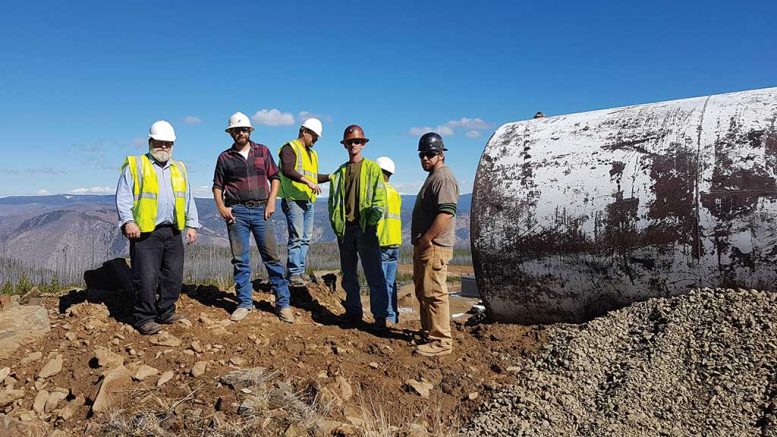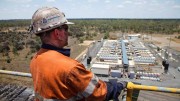In many eyes, cobalt is set to become an investor darling for 2018, and the recent royalty hike on cobalt production by the government of the world’s largest producer — the Democratic Republic of the Congo (DRC) — is only adding to the bullish outlook.
According to the United States Geological Survey (USGS), in 2016 the DRC accounted for 54% of global cobalt production that totalled 123,000 tonnes, and 49% of global reserves that totalled 7 million tonnes. Tied for second place in terms of production were China and Canada (6% each), with Australia taking second spot for reserves (14%).

 In late January, the DRC’s Senate approved legislation to raise taxes and royalties on metal production, including copper and cobalt. The legislation in the senate was similar to that in the lower national assembly, which also proposed a rise in the royalties on copper and cobalt from 2% to 3.5%, and a hike to 10% for the national government’s free-carried interest in any mining project — comparable to the carried interest seen in many West African mining countries.
In late January, the DRC’s Senate approved legislation to raise taxes and royalties on metal production, including copper and cobalt. The legislation in the senate was similar to that in the lower national assembly, which also proposed a rise in the royalties on copper and cobalt from 2% to 3.5%, and a hike to 10% for the national government’s free-carried interest in any mining project — comparable to the carried interest seen in many West African mining countries.
These new rates will apply to all new projects, but those companies with existing mining contracts in the DRC — such as Glencore and China Molybdenum Co. International (CMOC) — won’t be subject to most of the changes for another 10 years.
Advanced cobalt projects that are likely to see higher rates are ASX-listed Nzuri Copper’s Kalongwe high-grade copper-cobalt project in Katanga province and Kazakhstan-based Eurasian Resources Group’s Roan Tailings Reclamation copper-cobalt project near the city of Kolwezi.
 These latest moves by the DRC government added US$10 to the cobalt price over the past two months, bringing it to US$36.40 per lb. at press time, and more than double the US$15 price seen a year ago.
These latest moves by the DRC government added US$10 to the cobalt price over the past two months, bringing it to US$36.40 per lb. at press time, and more than double the US$15 price seen a year ago.
As the cobalt supply in the DRC becomes somewhat constrained by the new taxes and more cobalt production is carried out by non-Western companies — such as CMOC and Eurasian Resources — the U.S. government appears increasingly concerned that it depends too much on other countries for certain minerals.
This concern was highlighted by U.S. President Donald Trump’s executive order in December for the U.S. government to develop a federal critical mineral strategy and the USGS report released in January entitled “Critical mineral resources of the United States: Economic and environmental geology and prospects for future supply.” In the report, cobalt is one of 23 metals and minerals deemed paramount to “the national economy and national security of the United States.”
The USGS calls its report the first comprehensive update on U.S. mineral resource requirements and supply since the 1973 Oil Crisis.
The report underscores that the U.S. produces and stockpiles negligible amounts of cobalt. In 2016, the U.S. only produced 690 tonnes of cobalt and had reserves of 21,000 tonnes, or a mere 0.5% and 0.3% of global totals. Meanwhile the U.S. government’s cobalt stockpile amounted to just 301 tonnes of cobalt, plus negligible amounts of lithium cobalt oxide and lithium nickel cobalt aluminum oxide.
But the USGS has identified 1 million tonnes of cobalt resources in the U.S., mostly in Minnesota as well as (alphabetically) in Alaska, California, Idaho, Michigan, Missouri, Montana, Oregon and Pennsylvania. Idaho and Missouri have primary cobalt resources, while other states could produce cobalt as a by-product when mining nickel-copper sulphide deposits.
The presidential executive order also asked the Department of the Interior to begin “streamlining leasing and permitting processes to expedite exploration, production, processing, reprocessing, recycling and domestic refining of critical minerals.”
Secretary Ryan Zinke of the Department of the Interior, which oversees the USGS, stated: “I commend the team of scientists at USGS for the extensive work put into the report, but the findings are shocking. The fact that previous administrations allowed the United States to become reliant on foreign nations, including our competitors and adversaries, for minerals that are so strategically important to our security and economy is deeply troubling. As both a former military commander and geologist, I know the very real national security risk of relying on foreign nations for what the military needs to keep our soldiers and our homeland safe.”
U.S. government support for developing domestic cobalt sources is good news for any explorer and developer targeting cobalt deposits in the U.S., or any other metal and mineral on the critical list.



Be the first to comment on "Editorial: Cobalt positioned to enjoy strong year"